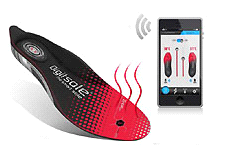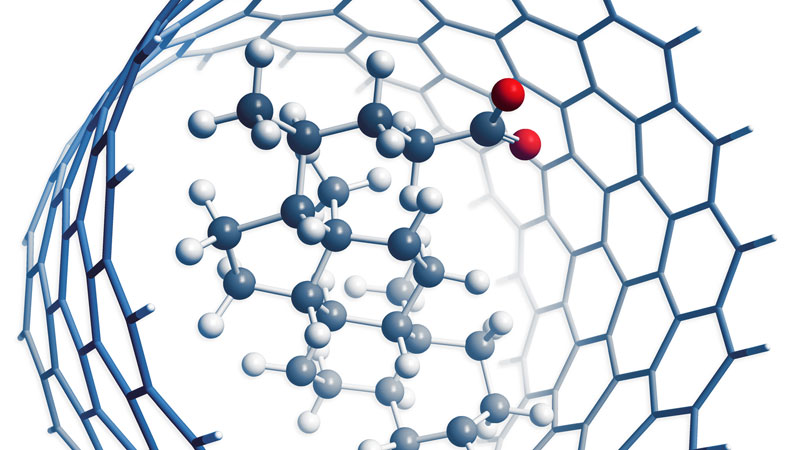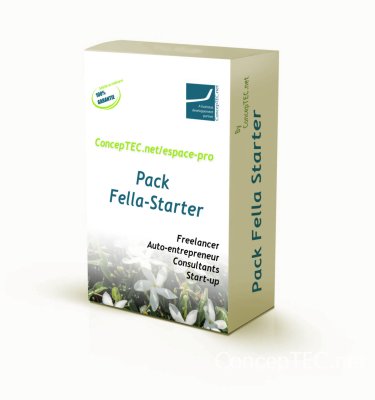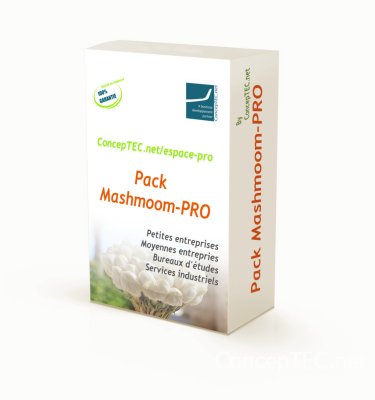What are smart textiles?
Intelligent textiles, also called technical or functional, are developed to react to various stimuli and they can be classified into three main categories according to their primary functions:
sensitivity: so-called "passive" textiles
reactivity: so-called “active” textiles
adaptability: “ultra-intelligent” textiles
In general, these textiles interact with the person or with their environment thanks to the integration of miniaturized electronic components such as LEDs, chips, thermistors, or chemical components such as microcapsules, conductive polymers, conductive materials. or piezoelectric, phase change materials, etc. (1)
What technologies are used to produce these innovative textiles?
The technologies used in the innovation and development of smart textiles are innumerable and we can distinguish:
The synthesis of new fibers and their association with traditional fibers
The incorporation into textiles of functional additives which can also be stored in micro capsules.
Coating of textile fibers.
Chemical treatment of fibers: grafting, enzymatic treatment, spraying, etc.
The association with fabrics of micro-sensors or other objects to make them "connected and intelligent"
All of these developments combine very broad scientific disciplines and technologies from many sectors to offer new horizons and new materials for new applications. (2)
What applications are envisaged with this new generation of textiles?
Smart textiles are invading practically every industry and they already cover a wide range of applications. They watch over our comfort and well-being, our safety and in particular our health.
Application of smart textiles: Comfort, Sport and Well-being
Thermoregulatory clothing giving a feeling of freshness
The introduction into the textile of micro-capsules of phase change materials such as paraffin, for example, leads to an intelligent thermoregulatory textile, which gives the sensation of an almost constant temperature, pleasant and balanced between feeling hot and cold. In fact, when the body produces heat, this material contained in these microcapsules liquefies by absorbing this heat, thus creating a feeling of freshness. And when the temperature decreases, this liquid becomes solid again, emitting previously stored heat. (3)
Thermally anti-cold insulating fabrics
With the same aim of ensuring a certain thermal regulation, hollow fibers therefore trapping air which constitutes an excellent insulator are used to manufacture textiles with a particularly effective thermal insulation effect for protecting against the cold and the wind. (3)
Heated textile
In 2017, a Canadian textile company successfully developed a heated non-woven fabric with silver fibers. In the same vein, another French company has developed a connected heated soleplate that can be controlled via its smartphone. (4)

Figure 1– Boots with heated soles.

Figure 2– DigitSole heated soleplate
Anti-UV textiles protect children
Another company invented heat-sensitive tablets that change color depending on temperature or UV exposure and therefore placed it on small children's hats to monitor children's UV exposure. (5)

Figure 3 - UV hat
Anti-damp fabric
Textiles based on fibers having evacuation channels on their surfaces are still being developed to promote the evacuation of moisture to the outside, which avoids having a wet textile in contact with the skin. (3)
Anti-stiffness tissues and improve blood micro-circulation
Another French company has succeeded in developing a Gold Reflect'Line technology which uses as material a polyurethane membrane in which metal oxides resulting from the grinding of volcanic rocks are incorporated. The integration of the microparticles of this material inside a textile allows the absorption and accumulation of the heat produced by the body under muscular effort to then restore this energy in the form of infrared rays. These penetrate into the upper layer of the skin and improve micro-circulation of the blood, which relieves muscle pain. (6)
Likewise, a compression stocking which mimics rhythmic muscle contractions of the calf has been developed. It stimulates blood circulation by stretching and contracting when stimulated by an electrical impulse. (7)

Figure 4– Smart compression stockings
Slimming pants
Cosmeto-textiles are doped with microcapsules filled with slimming active ingredients. These are gradually released for a slimming, draining, firming effect ... Your choice. (8)
Self-tanning clothing
Clothing equipped with micro-capsules filled with natural oils to facilitate tanning have been developed. These substances are released through the movements of the wearer and allow the latter to have tanned tinted skin. (9)
Soothing clothing
Another line of sleepwear and pillowcases has also been launched to facilitate sleep. They are made from functionalized textiles through micro-encapsulation which diffuse plant extracts and essential oils with relaxing effects. Pajamas infused with active substances act like a giant patch (9).

Figure 5– Soothing pajamas
D-Shirt dedicated to monitoring individuals
Another company has manufactured a “D-shirt” (a connected T-shirt) which integrates a heart rate monitor, a GPS, an altimeter and an inertial unit. This allows a whole series of valuable information to be gathered on a sportsman's clothing and easily accessible via an application on a Smartphone. (4)

Figure 6 – A connected T-Shirt
Anti-odor fabric
Textile fibers are functionalized to be anti-odor produced by a technology called BiotechR. This technology makes it possible to control the proliferation of bacteria in the fibers, thus preventing bad odors from perspiration without affecting the natural balance of the bacterial flora of the human body. (3)
Antibacterial fabric
RecoveryFil ™, a yarn composed of a blend of polyester fiber impregnated with zinc oxide, Tencel / Lyocell viscose fiber and viscose fiber impregnated with shell mother-of-pearl powder.
This yarn is woven to make a textile that is both anti bacterial, anti-odor and to provide UV protection.
Stain resistant fabric
Based on the lotus effect whose nanometric roughness and fluorine treatment make adhesion, in particular that of stains, almost impossible.

Figure 7– Anti-stain and anti-odor Ti-Shirt
Scented fabric
Other textiles are functionalized by introducing perfume microcapsules in order to have a textile with a permanent perfume effect. (3)
Anti-stress clothing
A French brand of well-being clothing has developed a spray based on micro-capsules of essential oils selected for their anti-stress action. Once this spray has been sprayed on the textile, the microcapsules become lodged and cling to the fibers and will gradually be released on contact with the skin. (10)
Shape memory fabric
Clothing with shape memory in metallic or polymer woven fabrics are arriving to satisfy all potential mothers. For example, a group of engineers from the Rennes School of Chemistry won the prize in a competition for making 'Pretty Belly' jeans with memory foam for pregnant women. Thanks to a nickel-titanium alloy with a 50/50 composition and woven with elastane, the jeans stretch and keep the same shape. (11)
Protection and security with smart textiles
Flame retardant and protective textiles
A research team has developed FireFilTM, an innovative glass-core technical wire whose coating layer is adapted to provide welders with protection against flames as well as increased resistance to tearing while providing them with increased comfort. . (12)
Belt to ensure passenger safety
A real-time information (ITR) seat belt has been developed to improve safety by providing modulated passenger monitoring. Each seat includes a pressure sensitive fleece as well as a battery to generate the signal. Subsequently, the belt, being activated by a presence detector, makes it possible to display the passengers who are strapped in on the screen. (13)


Figure 8 - Seat belt with real time information
Textile structures for protection against electromagnetic radiation
A research team from the Swiss EMPA has succeeded in producing a mixture of nano-cellulose fibers and silver nanowires, thus creating ultralight fine structures that provide excellent shielding against electromagnetic radiation. This can be used for protection against antennas, cell phones and wifi. (14)
Prevention of hearing damage
Thanks to new research from Nottingham Trent University, an army helmet is being developed to help the soldier better control noise and prevent the risk of hearing damage. These headphones are made from a knitted fabric with tiny microphones, almost invisible to the naked eye. (15)
Smart textiles for health
Smart textiles that are already at the service of our health and care for us are in full expansion and here are a multitude of examples:
Blanket to treat jaundice in newborns
A Dutch group came up with the idea of incorporating blue LEDs inside a blanket to treat infant jaundice (an orange pigment that causes the skin and whites of the eyes to turn yellow). In fact, this blue light destroys the bilirubin responsible for the yellow color of the baby's skin. (16)

Figure 9– The LED blanket to treat jaundice in newborns
A T-shirt for postoperative follow-up
Another group operating in the smart textiles sector has developed T-shirts equipped with sensors to record heart and respiratory rhythms as well as a GPS. These T-shirts make it easier to follow up on the patient's surgical procedures by sending the information to the doctor by Bluetooth on his mailbox or on his smartphone. (17)
Textile prostheses and implants
A European leader in surgical prostheses and implants based on technical textiles has developed a patch that becomes adhesive once introduced into the human body, thus avoiding staples or sutures. (18)
A cap for detecting the risk of epileptic seizures
A start-up has developed smart clothing to detect the risks of epilepsy (The term epilepsy comes from a Greek word which means: "to seize, to attack by surprise" which describes the unpredictable aspect of seizures). It is a cap capable of recording brain activity at home to expand access to diagnosis and treat patients as quickly as possible.
This garment called Neuronaute looks like a swimming cap equipped with biometric sensors. Patient data is transmitted by Bluetooth to a tablet, then sent to the doctor via an app. (19)
Belt for detection of fetal movements
The GEMTEX laboratory (Génie des Matériaux Textiles) which is the research laboratory of the National School of Textile Arts and Industries (ENSAIT), located in Roubaix, France, has in turn worked on a waist belt for pregnant women, which detects fetal movements. (4)
Textile to treat adenocarcinoma
GEMTEX researchers have also developed technical textiles that treat adenocarcinoma, which is a cancer of the skin. . (4)
Cosmeto-textile to treat tennis elbow
Manufacturers have developed a cosmetotextile directed in particular for athletes. These are elbow pads containing microcapsules composed of a mixture of plant-based active ingredients and low dose ibuprofen. These elbow pads can be worn by tennis players with tennis elbow. (20)
(According to the Standardization Bureau for Textile and Clothing Industries (BNITH), a cosmetotextile is an "article containing a substance or a preparation intended to be released durably on superficial parts of the epidermis. And claiming one or more several particular properties ”.)
A bandage that delivers medication in a controlled manner
Now several drugs can be present in a dressing. Researchers at the University of Nebraska-Lincoln, Harvard Medical School, and MIT have developed a bandage made of electrically conductive fibers that are coated with a hydrogel. The latter may contain drugs such as antibiotics, growth promoters or pain relievers. This means that various drugs could be present in a dressing. (14)
Dressing to heal
European scientists worked on dressings equipped with microprocessors which would be able to make a permanent prognosis of the wound and to deliver drugs to heal it. (21)
Finally, what promises do these smart innovations carry?
These countless applications are a testament to the significant rise of these smart textiles which seem to be capable of doing it all. This wonderful generation of textiles does not turn out to be science fiction. It is already a reality for the present and a beautiful promise for the future.


























